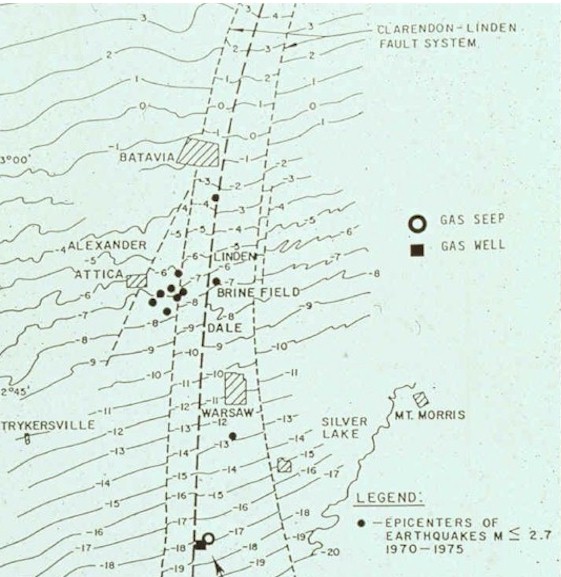
Soil Gas
Soil Gas Theory
Gases that accumulate in the pore spaces of sediment, in the vadose zone, are referred to as soil gases. The gases that are predominately of interest are methane and ethane. The gaseous hydrocarbons seep from the source rock through faults and fractures, and to a minor degree by diffusion, and accumulate in the overlying soil. For years, soil gas surveys have been useful in determining subsurface structures where bedrock exposure is poor. Studies have shown that surface geochemistry, in the form of gaseous hydrocarbons, can be helpful in locating deep oil and natural gas reservoirs. Faults can serve as conduits for gas accumulation at the surface. Methane and ethane gas concentrations were high in the regions over the gas reservoirs but higher in regions that were associated with faults.
The detection of buried geologic structures in relatively thin sedimentary cover and the mapping of those structures by the use of soil gas anomalies is well documented by Jacobi and Fountain. Using soil gas as one of several methods successfully mapped major faults and fractures of the North-South trending Clarendon-Linden Fault System in Western New York.It is necessary to distinguish between thermogenic and biogenic methane to determine if the soil gas anomaly is a product of a hydrocarbon reservoir source. Methane (CH4) can be produced from two distinctly different processes. The controlling factor is the environment from which it is formed that determines the type of methane (microbial or thermal). Microbial Methane is produced from microorganisms (Methanogens) with the presence of water and organic compounds in a anaerobic environment at a relatively shallow depth (0-1 km). Thermal methane and ethane (C2H6) are produced by the genetic/post-genetic fractionation of a carbon source trapped within the subsurface rock (1-7 km), whereas heat and pressure are the controls.
Gowanda Soil Gas Study:
Soil gas studies were undertaken to investigate the existence of CSD's, Cross-Strike Discontinuities, in a portion of the bass island oil and gas reservoir in Western New York State. Production from the bass island structural trend is entirely dependent upon fracturing of Devonian and Silurian rock units in the form of thrust faults, tear faults and cross-strike discontinuities which mark offsets in the major structure. The location of CSD’s are important for their significance in the extraction and storage of natural gas and oil. Open fractures can provide preferential pathways for the migration of thermogenic gases primarily methane and ethane to the surface.
The results from the Gowanda study has demonstrated the usefulness and applicability of soil gas analyses in locating and characterizing subsurface, hydraulically active, fracture zones (CSD’s) related to oil and gas prospects along the Bass Island Trend in the Dayton and Persia townships.
The primary goals of the soil gas research at the University of Buffalo are to:
1. Delineate the migration of light hydrocarbons through fractured rock.
2. Determine if faults and fractures can manifest into surface expressions in the form of Lineaments.
3. Establish the correlation between soil gas surveys and FID's (Fracture Intensity Domains) in exposed bedrock.
4. Determine the effectiveness of soil gas for petroleum exploration, specifically for delineation of fractured reservoirs.
Previous Works:
1. Understanding fault and fracture dynamics in the Retsof Mine, NY collapse (formerly the largest salt mine in the world) and in the Solvay Mine, WY
2. Definition of fault and fractures in salt storage caverns
3. Oil and gas exploration
4. Identification of zones of permeable vertical fractures, implications for water resources (hydrology) and site characterization (contaminant hydrology).5. Determination of the extent of fracturing of post-glacial sediments in New York, specifically fractures parallel to basement structures. Implications for Neotectonics and for ground water flow.

Clarendon Linden Fault Zone
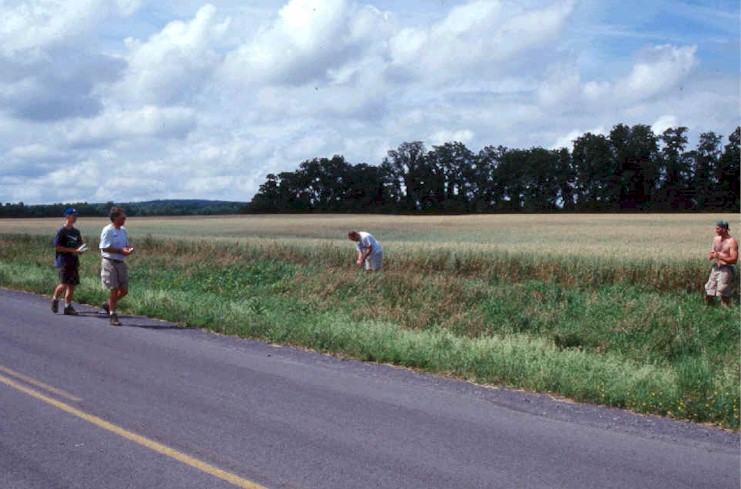
Soil Gas Sampling
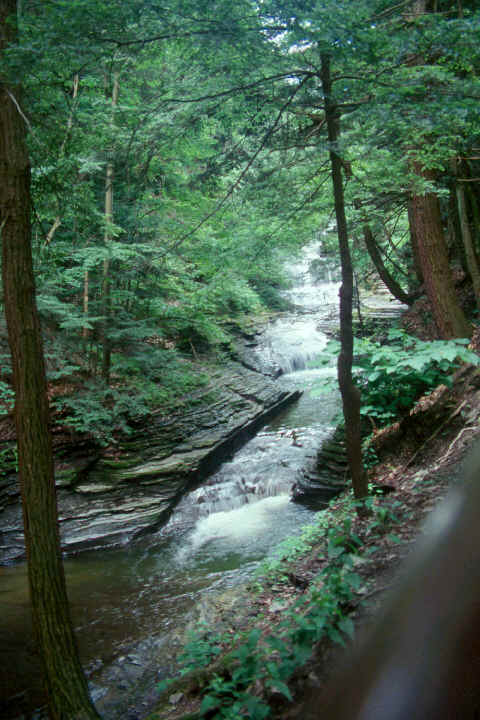
The sights of field research
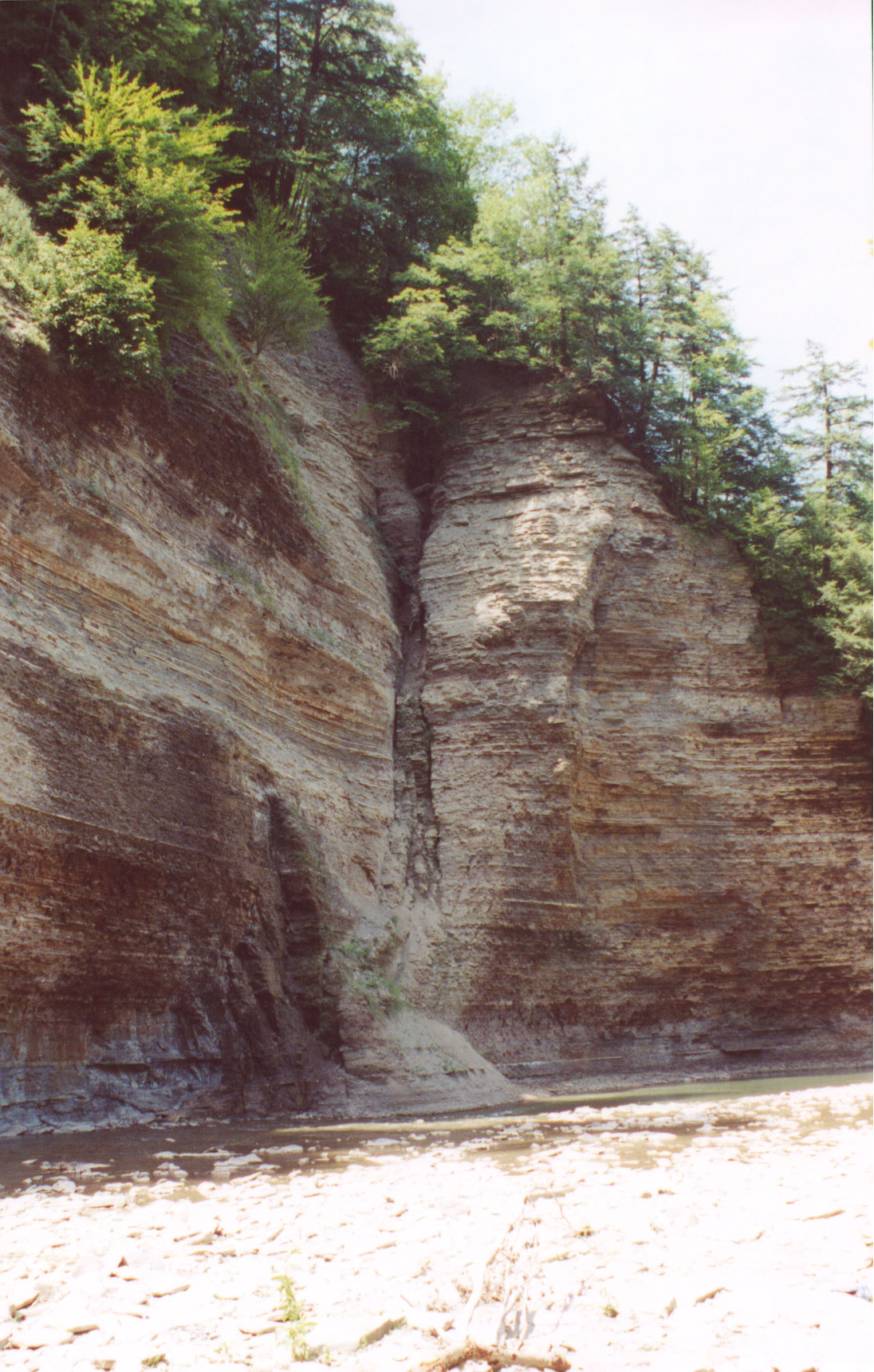
The above picture is of a fractured Devonian shale formation which is approximately 150 feet high from which reservoir gas can migrate.
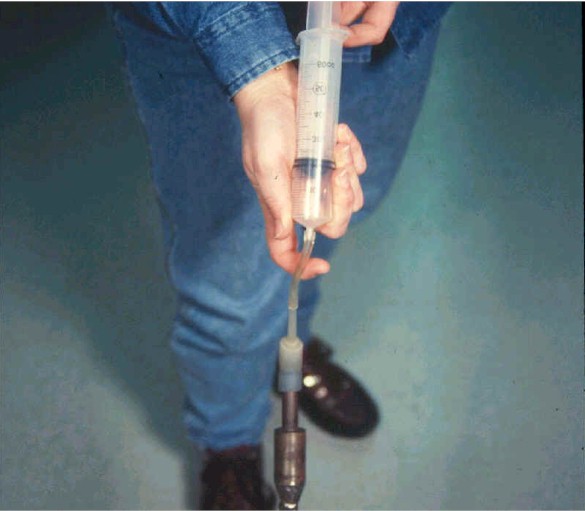
Soil Gas Probe

Soil gas probe used for field investigations.
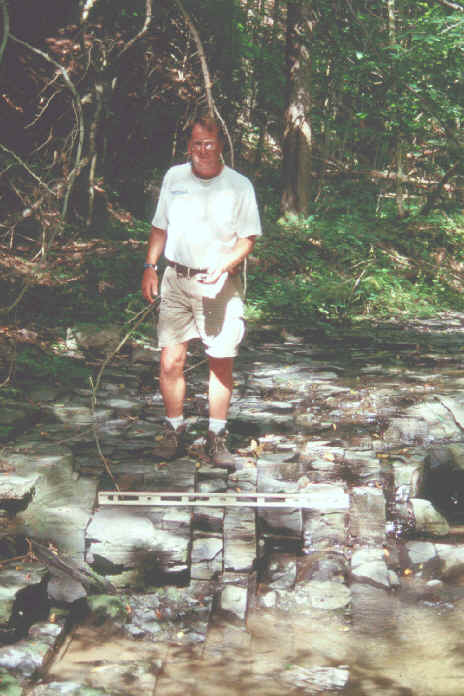
Recording fracture orientation
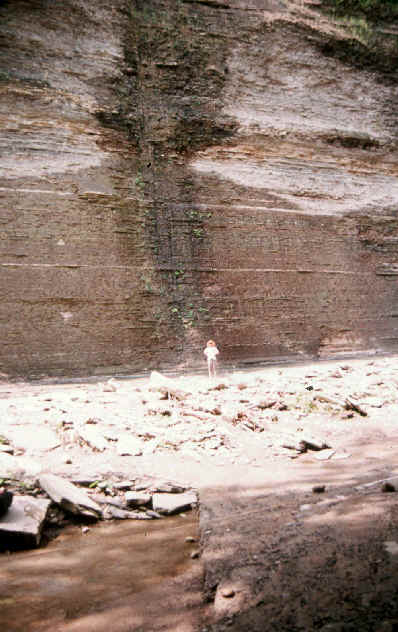
NW Fracture
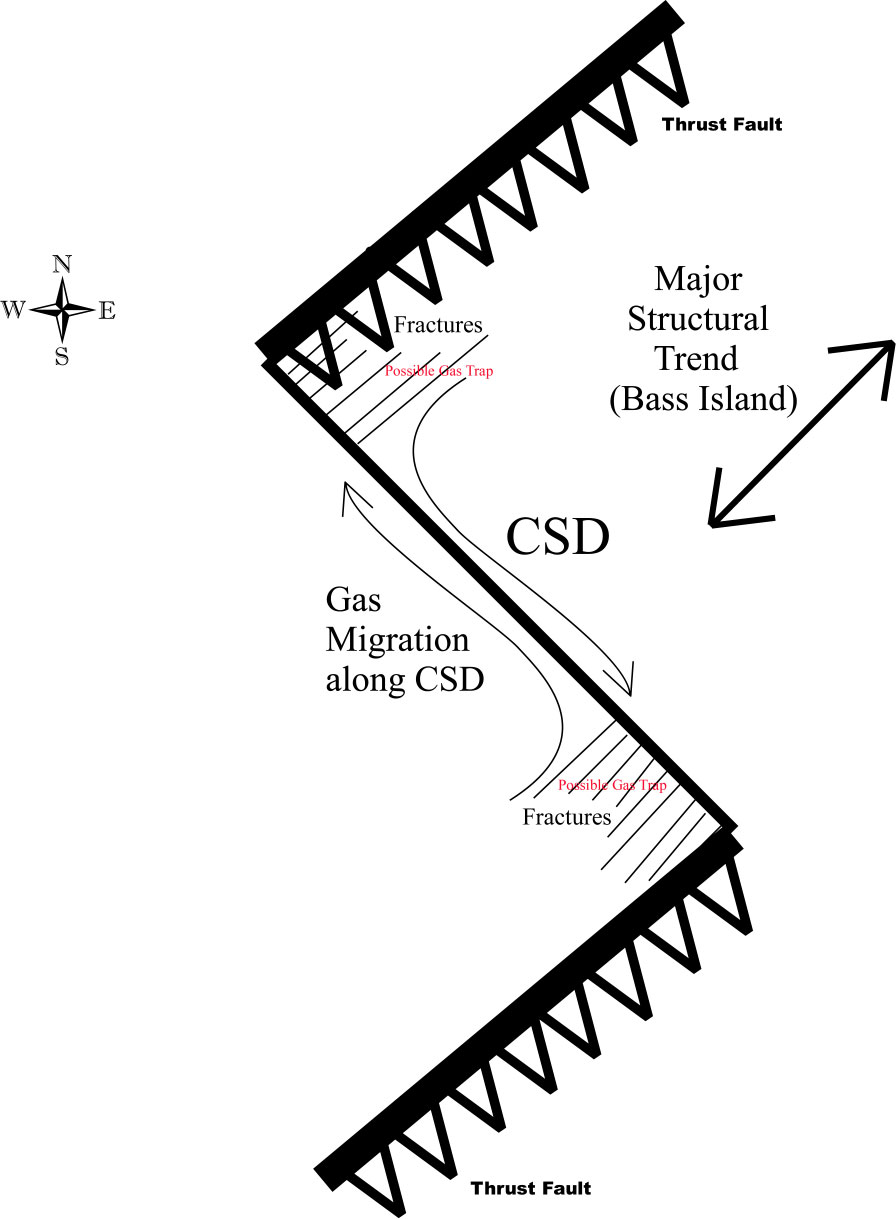
Idealized CSD structure.
Theses:
Hegarty, Denis: "The Use of Soil Gas for the Study of Subsidence in Cuylerville, NY Area",
Masters Thesis, 1997.
Paquette, Lisa: "The Use of Soil Gas Analyses for the Evaluation of Potential Gas Leakage
From a Petroleum Storage Facility. Case Study - Bath Petroleum Storage Inc. Bath, New
York", Masters Thesis, 1998.
Travis Nelson: "The
Use of Soil Gas Surveys to Delineate
Subsurface Structure for Oil and Gas
Prospects of the Bass Island Trend:
Cross-Strike Discontinuity Locations for
Cherry Creek, Perrysburg, Gowanda and
Collins Center Quadrangles,
Western New York", Masters Thesis, 2002.
Lucas Budny: Seneca Lake Soil Gas Project, detection of
fractured reservoirs, Masters Thesis, 2002.
Richard Bieber: Soil Gas Investigations for Delineation of Buried Fractures & Faults, Zoar Valley Gas Storage Field, Masters Thesis, 2002.
Dr. John C. Fountain
Publications, Abstracts, & Technical Reports by Research Area
Fracture Publications:
Jacobi, R.D. and J.C. Fountain, (1993). "The Southern Extension and Reactivation of the
Claredon-Linden Fault System", Geographic Physique et Quat. 47: 285-302.
Fountain, J.C., R.J. Jacobi, (1997). "Detection of buried faults and fracture systems using
soil gas", Submitted to: Geology, 9pp.
Fracture Abstracts:
Jacobi, R.D. and J.C. Fountain, (1988). Structural and geochemical transect across the
Rowe-Hawley Zone, central Mass.: Geol. Society of America, Abstract with Programs, NE
section, 20(1):29.
Fountain, J.C., R.D. Jacobi, and G. Gill, (1989). Detection of bedrock faults in covered
areas through the use of soil-gas surveys: A case study on the Clarendon-Linden Fault, N.E.
Sect. Geol. Soc. Amer., Abstract.
Jacobi, R.D., J.C. Fountain, and G. Gill, (1989). Evidence for the continuation of the
Clarendon-Linden Fault System into central Allegany County, New York. N.E. Sect. Geol.
Soc. Amer., Abstract.
Cohen, A. J., and J.C. Fountain, (1996). "Innovative Approaches to Characterizing
Geometry and Flow Patterns in Fractures." In: Abstracts with Programs of The Geological
Society of America's 31st Annual Northeastern Section, Buffalo, New York 28(3):46.
Fountain, J.C., T.D. Jacobi and M.P. Joy, (1996). "Detection of the Clarendon-Linden
Fault System, Allegany County, New York Using Soil Gas Analyses", In: Abstracts with
Programs of The Geological Society of America's 31st Annual Northeastern Section,
Buffalo, New York, 28(3): 55.
Hegarty, D., M. Joy and J.C. Fountain, (1996). "The Use of Soil Gas Data for the Study of
Subsidence in the Cuylerville, N.Y. Area Since March 1994", In: Abstracts with Programs of
The Geological Society of America's 31st Annual Northeastern Section, Buffalo, New York,
28(3):63.
Jacobi, R. D., J.C. Fountain, J. Burley, S. Korff, L. Kracker, and C. Zent, (1996).
"Utilization of a GIS (ARC/INFO) for Compilation of Cultural and Geological Data in Land
Use Considerations: Allegany County, New York State." In: Abstracts with Programs of The
Geological Society of America's 31st Annual Northeastern Section, Buffalo, New York,
28(3):67.
Jacobi, R.D., J.C. Fountain, M. Zhao, G. Smith, T. Peters, (1996). "Character and
Reactivation History of the Clarendon-Linden Fault System: Evidence from New York
State", In: Abstracts with Programs of The Geological Society of America's 31st Annual
Northeastern Section, Buffalo, New York, 28(3): 67.
Fracture Technical Reports:
Jacobi, R and J. C. Fountain, March (1995). Seismic Potential of the Clarendon-Linden
Fault System in Allegany County, Submitted to New York State Research and Development
Authority, 1708 p.
hits since April 1, 2001